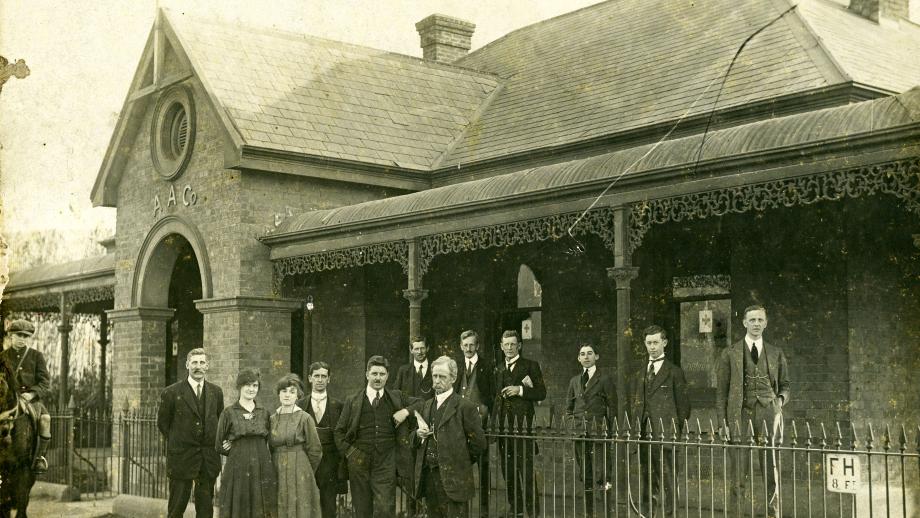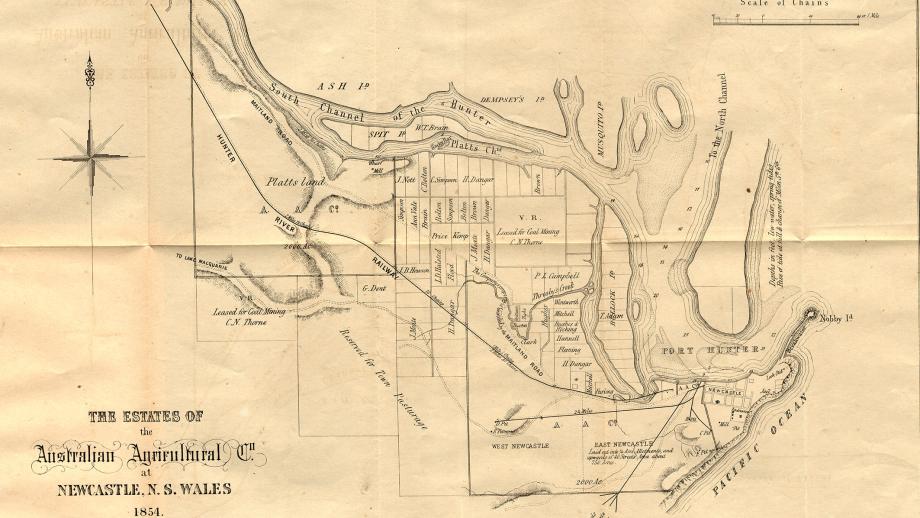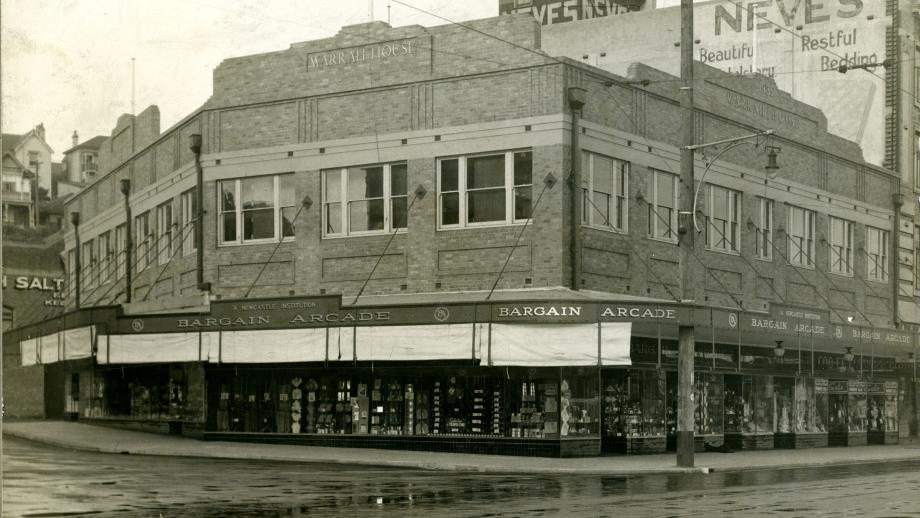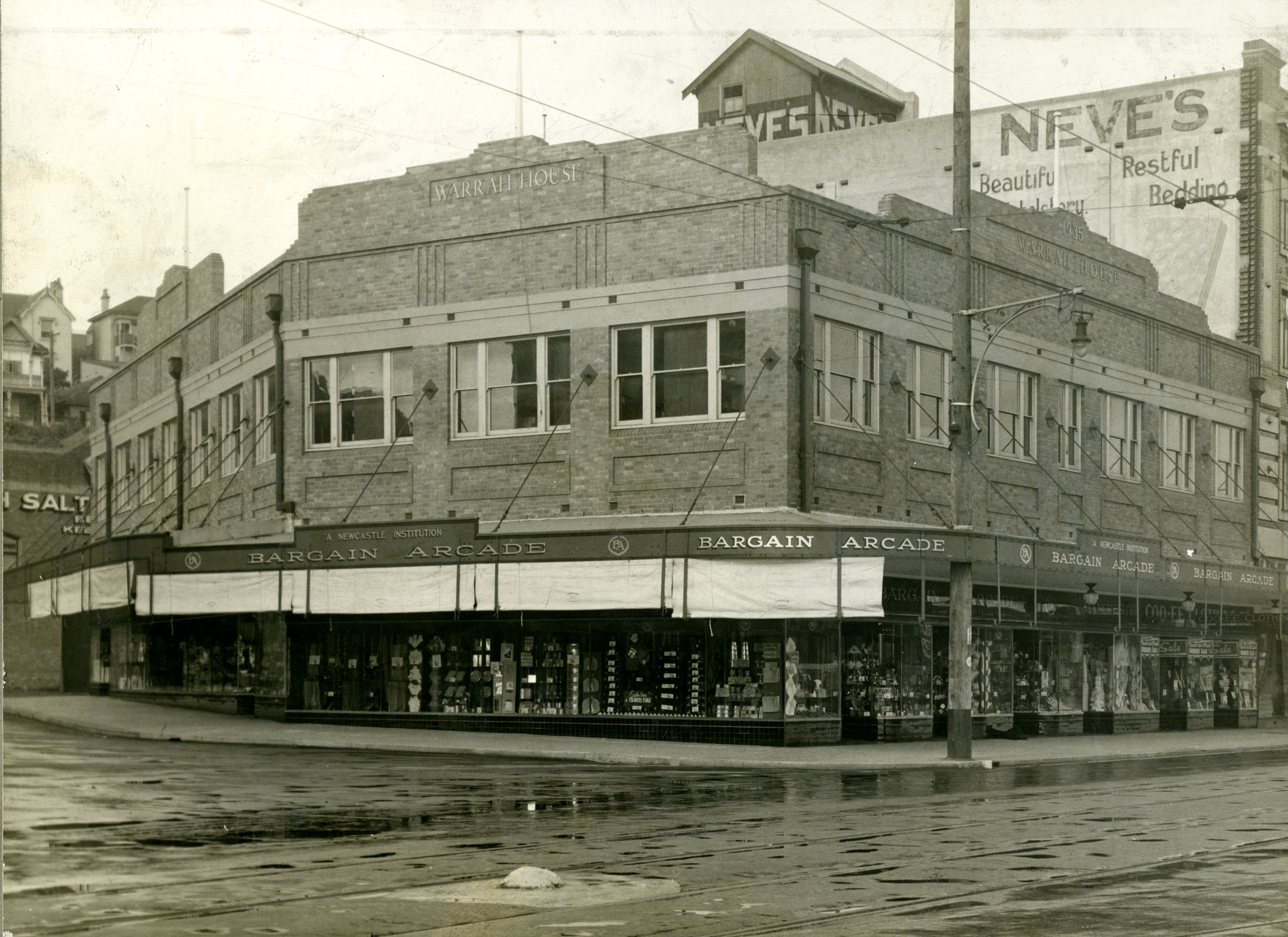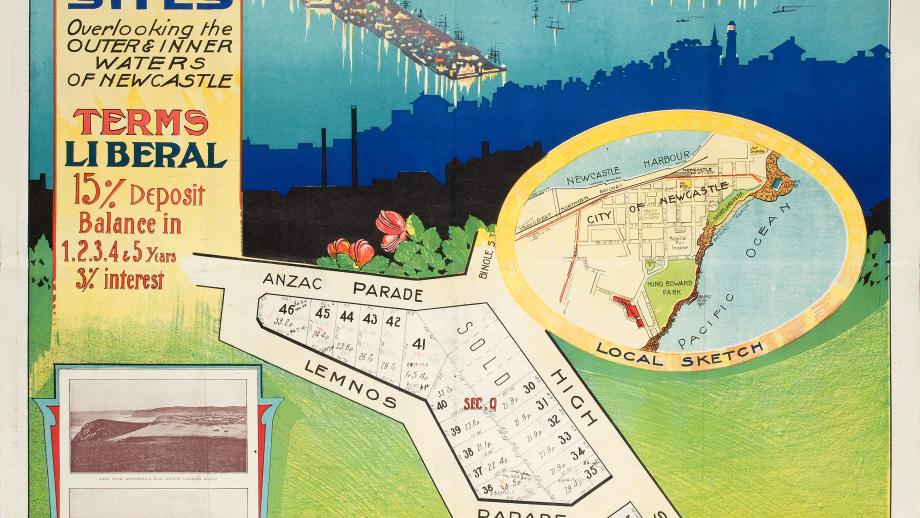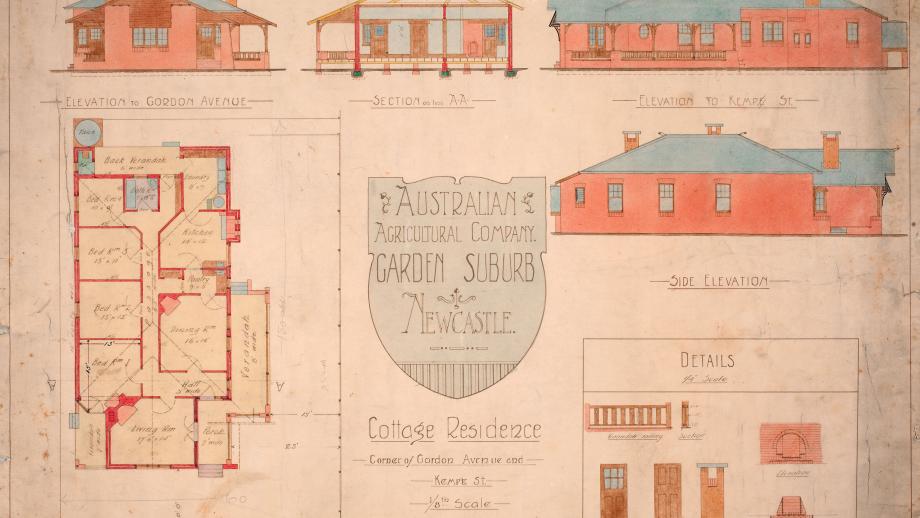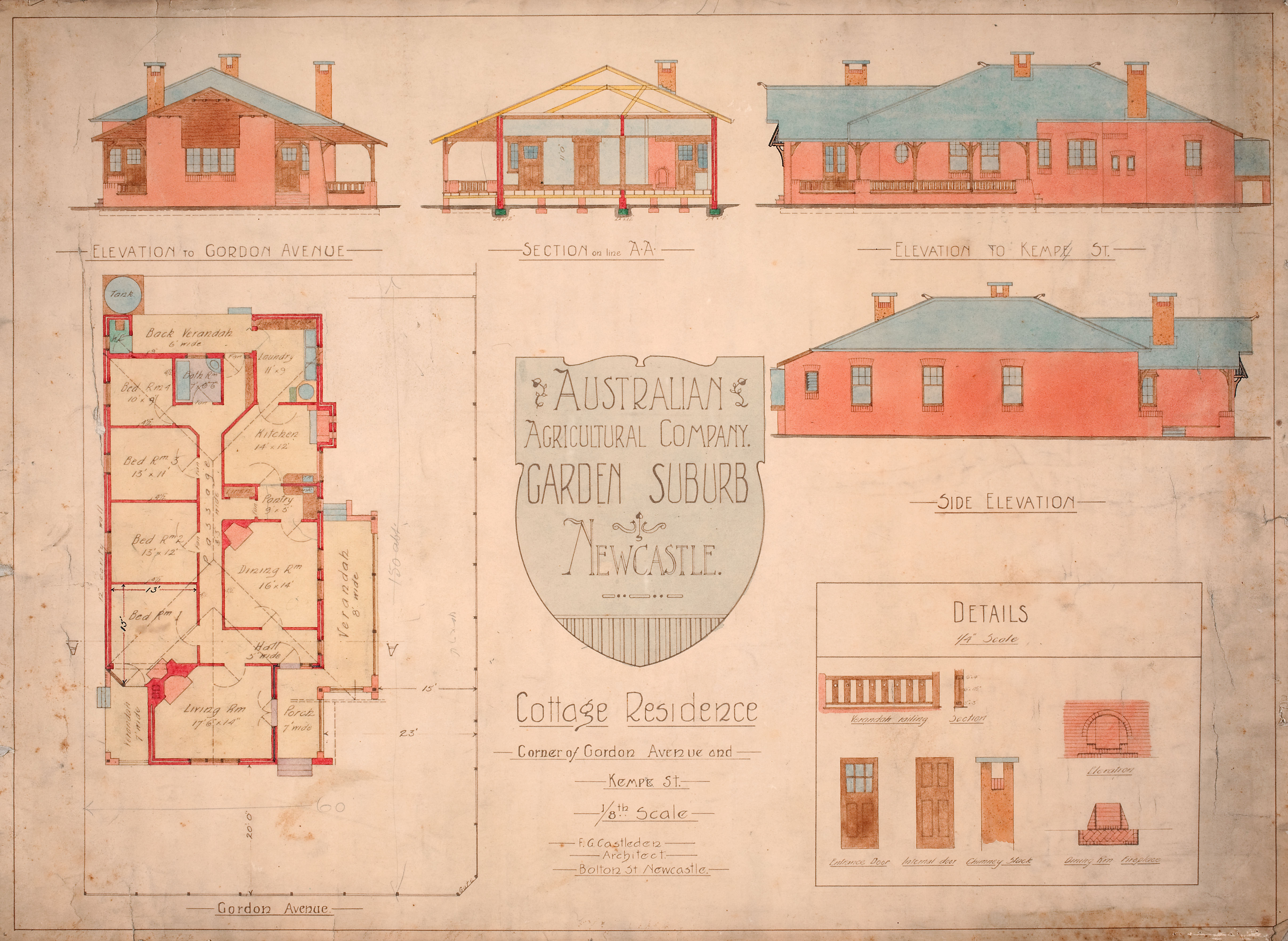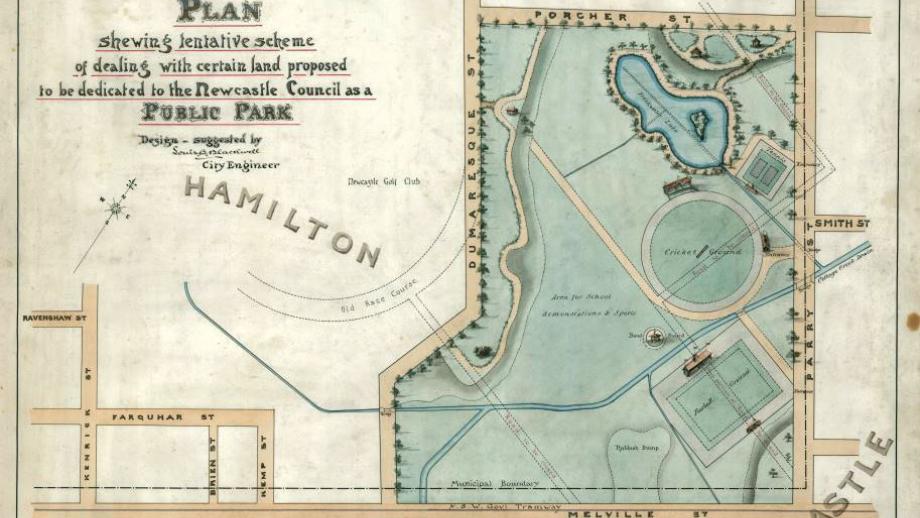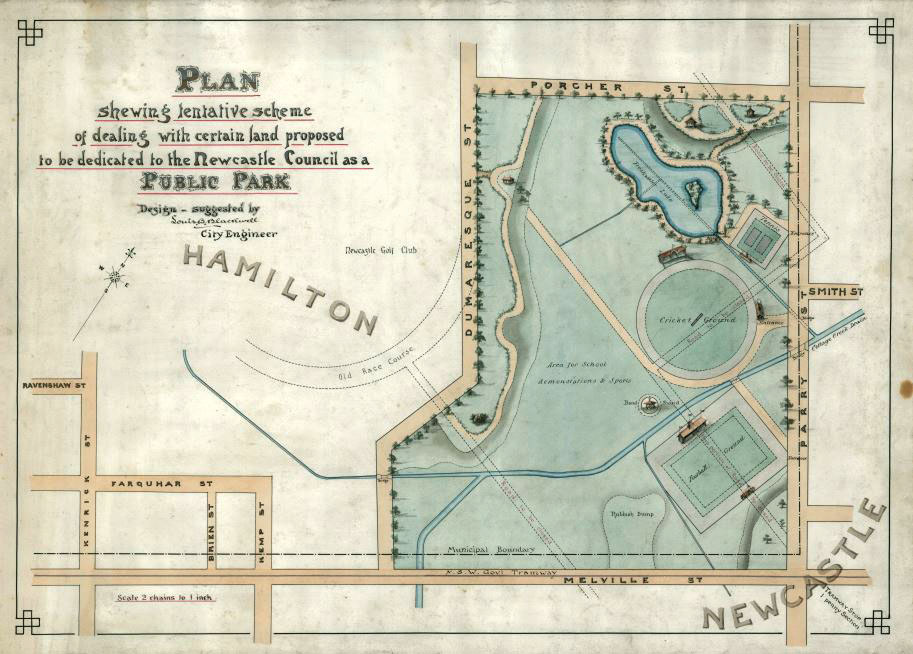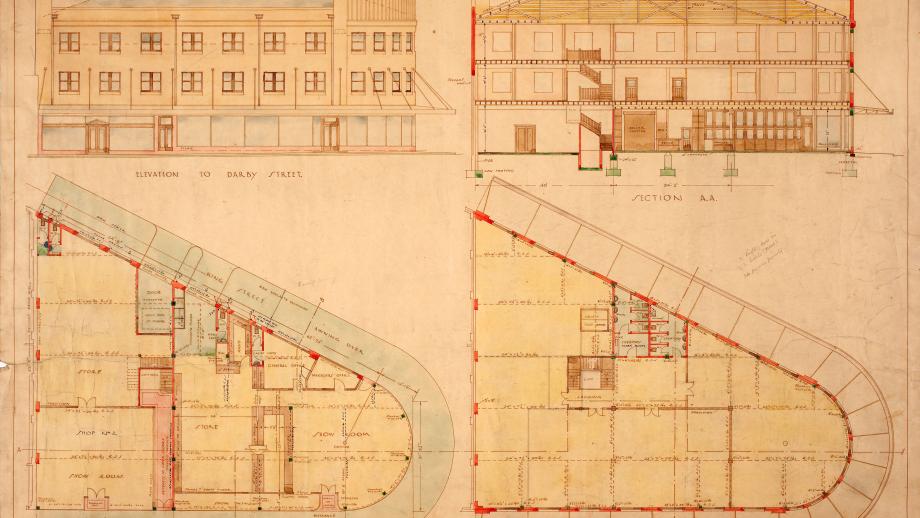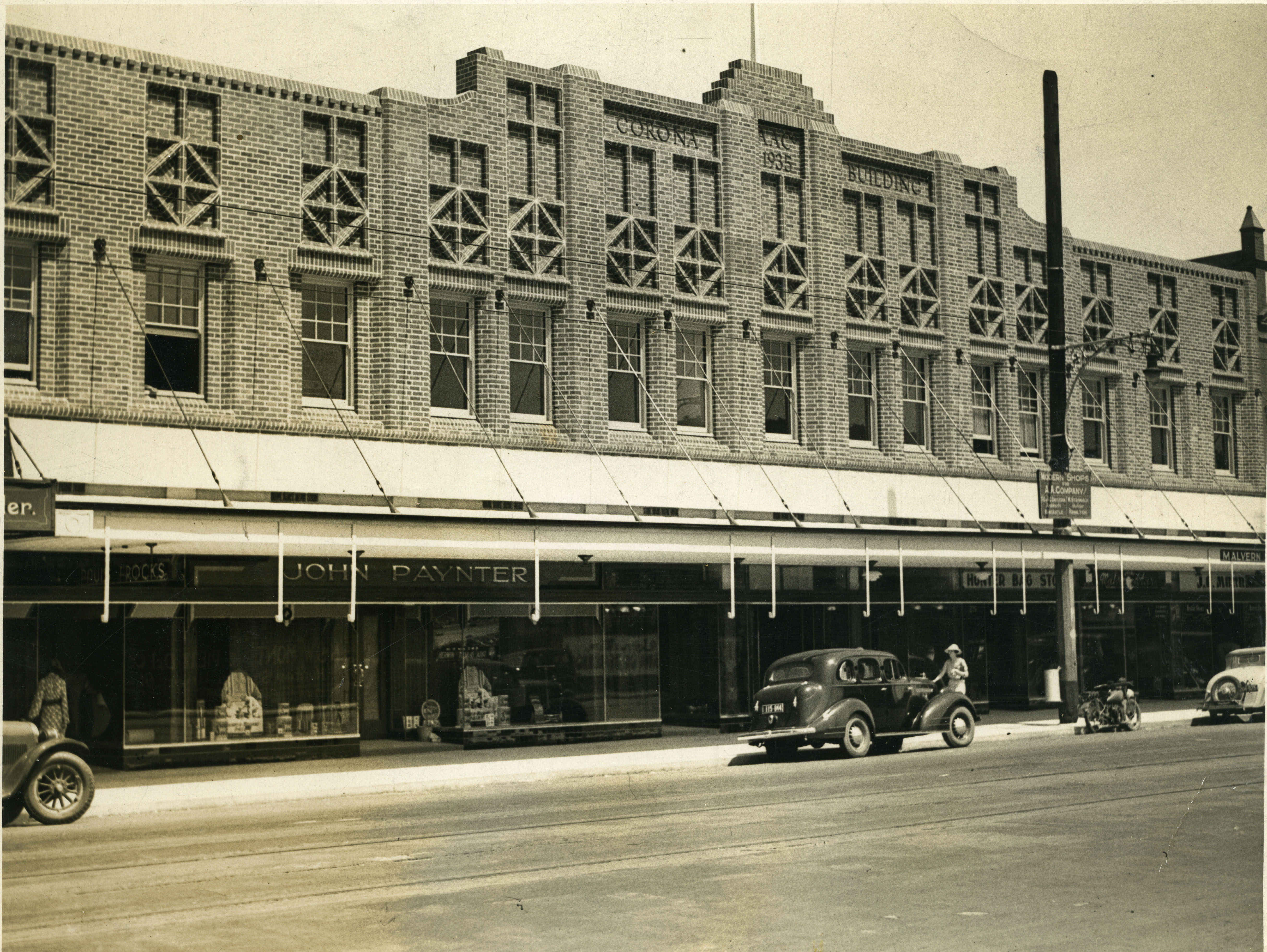Newcastle
For over 130 years the Australian Agricultural Company had a strong association with Newcastle in New South Wales, with the Company operating coal mines in the region for over 80 years and basing its head office in the city until the 1960s.
In 1831, the Company opened Australia’s first railway on its 2,000 acre Newcastle Estate when it officially opened its first coal mine, known as the A Pit, on 10 December. Alongside the pit, the Company opened a wharf and railway. Servicing the A Pit, the railway used iron rails on an inclined plane to transport one ton coal wagons between the pit and a coal-loading staithe at the Hunter River.
In 1852 the Company’s Deputy Governor and Acting General Superintendent Archibald Blane appointed George Darby as the Company Surveyor and tasked him with laying out town allotments in the eastern part of the Company’s Newcastle Estate with a view to offering these lots for sale. These town lots occupied the area along Maitland Road (then Blane and Charlton Streets, now Hunter Street), Lower Church Street (now King Street), and Lake Macquarie Road (now Darby Street), with additional lots planned along The Terrace for “superior residences” (Pemberton 2011). These were to be auctioned in January 1853, but Blane’s unexpected death at Booral on 6 November 1852 delayed the auction until April. Blane’s successor Lieutenant Marcus Brownrigg reported the sale as satisfactory, with 20 acres sold, fetching almost £4,000.
The plan to sell additional lots was complicated by the coal and passenger railways that crossed the Company’s Newcastle Estate. The first of these was established in 1851 under protest from the Company. Physician and industrialist James Mitchell had built a smelting works on his Burwood Estate in 1846, in competition with the Australian Agricultural Company’s coal works. In 1847 Mitchell gave evidence at the inquiry into the Company’s coal monopoly, claiming the monopoly hindered his smelting works, inflated coal prices, and obstructed the development of Newcastle (Guilford 2006). In 1851 the New South Wales Legislative Council passed a special Tram Road Act to enable Mitchell to build a railway from his estate to the wharf on Newcastle’s waterfront, passing through the Australian Agricultural Company’s land (Guilford 2006). In addition to this railway, the Company constructed its own railroads to transport coal from its D, E and F Pits.
In 1854 land in the north west corner of the Company’s Estate was sold to the Hunter River Railway Company to build a railway between Newcastle and Maitland, with Newcastle Railway Station initially located at Honeysuckle Point to the west of the Company’s wharf (later Civic Station) before moving farther east in 1859 (Pemberton 2011).
In 1883 the New South Wales Railway Commissioner purchased 36 acres of the Company’s land for the junction of the Great Northern Railway (Hunter River Railway) and the new railway line from Newcastle to Sydney, and Hamilton Station opened in 1887 (Pemberton 2011).
Following the opening of the Company’s D and E Pits in Newcastle, a small settlement was established nearby known as The Borehole. In 1855, adjoining The Borehole, a new area was laid out and appropriately named Pit Town. Some of the smallest blocks here were designed to be leased or sold to the Company’s miners, with the first land sales in 1857.
Land sales at Newcastle fluctuated with the general state of the economy, the development of rival villages, and the needs of the collieries (Pemberton 2011). Most of the eastern part of the Company’s Newcastle Estate was incorporated as the Newcastle Municipality in 1859. In 1871 The Borehole and Pit Town areas were incorporated as the Hamilton Municipality, named after the Company’s Governor E.W.T. Hamilton.
A number of blocks on the Company’s Newcastle Estate were leased or sold to other companies for development including the Bank of Australasia (1854), the Patent Indurated Fuel Company (1857 – this block is now part of Civic Park), the Newcastle Gas and Coke Company (1869), Arnott’s Biscuits (1869), Castlemaine Brewery and Wood Brothers (1870s) and Dark’s Ice and Cold Storage (1912).
The Company also leased or sold land in parts of its Newcastle Estate for public use, particularly for use as park land. Some of these parks included Gregson Park, Learmonth Park and Henry Park in Hamilton; Centennial Park in Cooks Hill; Nesca Park in Bar Beach; and a substantial 70 acres for Shedden Park (now the National Park Sports Grounds) in Newcastle West. The Company also leased out land for a racecourse and cricket ground at Wallaby Flat in 1864.
In 1883 the Company built new offices on their Newcastle Wharf which was known as Argyle House, the name taken from the Company’s telegraphic address ‘Argyle Newcastle’. This remained the Company’s head office until 1964, when the head office was moved to Tamworth. The Newcastle offices were subsequently sold in 1966.
During the 1880s-90s the Company sold blocks in Hamilton and Islington to the Newcastle and Suburban Mutual Land and Investment Company for subdivision and sale.
Throughout the 1900s, increasing taxes on unimproved land resulted in the Company subdividing its Newcastle Estate further and selling off large residential subdivisions. Auctions were held for land at The Junction from 1908, Cook’s Hill from 1912, Shepherd’s Hill from 1915 and Bar Beach from 1924. In 1912 plans were drawn up for a 300-acre site at Hamilton to be known as the Garden Suburb, formerly the Melville Street Swamp. The first sales here were in 1914.
The Company largely retained ownership of Platt’s Estate for much of the 19th century, apart from 5 acres sold in 1873 for Sandgate Cemetery, another 5 acres in 1884 for the Contagious Diseases Hospital, and a small residential subdivision at Platt’s Hill / North Hanbury (Municipality of Waratah) (Pemberton 2011). In 1876 the Company built a home for General Superintendent Jesse Gregson on the estate in the area which later became Mayfield West.
From the early 1900s the Company began to sell off more land around the Platt’s Estate, including for a subdivision at Sandgate in 1905; residential subdivisions at North Hanbury and Mayfield between 1914 and 1918; land for saleyards (1912), abattoirs (1913) and a repatriation home (1919), and the sale of the southwest section of the estate to later become the site of the University of Newcastle.
By the 1930s the Company had sold most of its residential land in the areas surrounding Newcastle and instead turned its focus to the redevelopment of commercial buildings in the Newcastle Central Business District, particularly around Hunter, King, and Crown Streets. During this time the Company constructed the Corona, Argyle, and Warrah Buildings, but these were to be the Company’s last major investments in the Newcastle area, with its head office relocated to Tamworth in Northern New South Wales by 1965.
